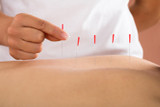How Occupational and Hand Therapists Perform Initial Hand Function Evaluations
When a patient begins hand therapy—whether recovering from an injury, surgery, or neurological condition—the first session is all about understanding their current function and setting a baseline for recovery. This process, known as an initial hand function evaluation, guides treatment planning and allows therapists to track meaningful progress over time.
Here’s a breakdown of what a typical evaluation looks like, and how tools like handheld dynamometers, hand grip dynamometers, and the pegboard tests can enhance the process.
1. Patient History and Subjective Assessment
An occupational therapist or hand therapist begins by gathering key background information:
-
How did the injury or condition develop?
-
Is the patient right- or left-handed?
-
What are their daily activities and occupational demands?
-
What level of pain or dysfunction are they experiencing?
Understanding the patient’s story provides context for the physical findings.
2. Visual and Physical Inspection
A visual assessment follows. The therapist checks for:
-
Swelling, deformity, or muscle atrophy
-
Scars or surgical incisions
-
Posture or compensation patterns
Palpation may also be used to detect tenderness, temperature changes, or abnormal tissue texture.
3. Range of Motion (ROM) Testing
Both active and passive range of motion are measured:
-
Active ROM: The patient moves their joints on their own
-
Passive ROM: The therapist gently moves the joints
All major joints of the hand, fingers, and wrist are assessed to identify any limitations or stiffness.
Range of Motion Assessment Products: Goniometers and Inclinometers
4. Strength Testing
Strength is one of the most critical indicators of hand function. Therapists commonly use:
-
Hand Grip Dynamometer
Hand Dynamometers devices such as the Baseline BIMS Digital Hand Dynamometer measure overall grip strength in pounds or kilograms. It’s a simple, reliable way to establish a strength baseline and track improvements in grip strength.
-
Handheld Dynamometer
For more detailed evaluation, the MicroFET 2 or the Lafayette Hand-Held Dynamometer allows therapists to test individual muscle groups (e.g., wrist extensors, intrinsic hand muscles) using manual muscle testing (MMT). Its digital display and portability make it ideal for capturing precise data during evaluation and follow-up sessions.
-
Pinch Gauge
A pinch dynamometer is a handheld device used to measure the strength of the fingers and thumb during different types of pinch grips—typically tip pinch, key (lateral) pinch, and palmar (three-jaw chuck) pinch.
5. Sensory Testing
For patients with nerve injuries or neurological conditions, sensation is assessed using tools like:
-
Monofilaments for light touch
-
Discriminators for fine sensory detail
This helps determine how well the hand can perceive texture, temperature, and pressure.
6. Functional Testing and Dexterity
Therapists observe how well the patient performs everyday hand tasks such as:
-
Picking up small objects
-
Buttoning clothing
-
Manipulating tools or writing instruments
The Jebsen-Taylor Test of Hand Function is an objective and standardized assessment test that evaluates all of the above for functional testing and dexterity.
The Neofect Smart Pegboard is especially useful for functional testing and dexterity as well as tracking progress. It transforms traditional pegboard activities into an interactive digital experience, allowing therapists to evaluate fine motor control, coordination, and speed. It also records performance metrics over time, making it easier to track functional gains.
7. Edema and Pain Assessment
Swelling is measured using circumferential tape gauges, or water displacement volumetry. Pain is often rated on a 0–10 scale and documented for future comparison.
8. Patient-Reported Outcome Measures
Patients may also complete standardized forms like the DASH (Disabilities of the Arm, Shoulder, and Hand) or PRWE (Patient-Rated Wrist Evaluation) to assess the perceived impact of their condition on daily life.
Bringing It All Together
By combining hands-on clinical skill with smart evaluation tools, therapists can deliver a comprehensive assessment that sets the foundation for effective treatment. Devices like the MicroFET2, Lafayette Hand-Held Dynamometer, a hand grip dynamometer, pinch gauges, the Jebsen-Taylor Test of Hand Function, and the Neofect Smart Pegboard each play a unique role in this process—providing therapists with objective data and helping patients see tangible progress.
If you’re a clinician looking to elevate your hand therapy evaluations, consider integrating these tools into your practice. They not only improve documentation and outcomes—they also empower your patients with measurable, motivating results.
Related Blog Posts:
- Deciphering Strength: Understanding Manual Muscle Test Grading
- Unlocking Movement: The Role of Goniometers in Physical Therapy
- A Guide to Joint Range of Motion (ROM) Measurement Using an Inclinometer
- The Jebsen-Taylor Test of Hand Function in Occupational Therapy
- Improve Hand Function and Dexterity with the Neofect Smart PegBoard
Recent Posts
-
Acupuncture vs. Dry Needling: What’s the Difference?
At first glance, acupuncture and dry needling might seem identical. Both involve inserting thin need …Jun 11th 2025 -
What Is Dry Needling? A Modern Approach to Pain Relief and Muscle Recovery
Chronic muscle pain, tension, and restricted movement can significantly impact your daily life, sign …Jun 11th 2025 -
The Kinetic Chain and Its Importance?
The kinetic chain is a key principle in physical therapy, referring to the way muscles, joints, and …Apr 18th 2025



